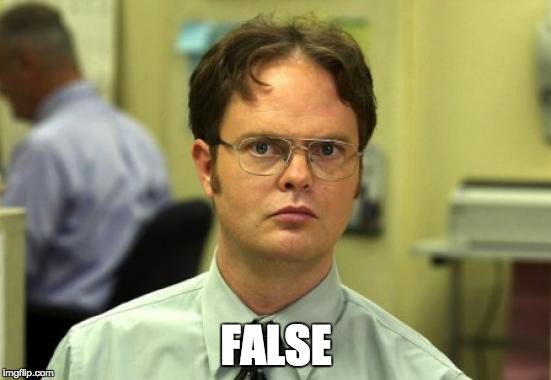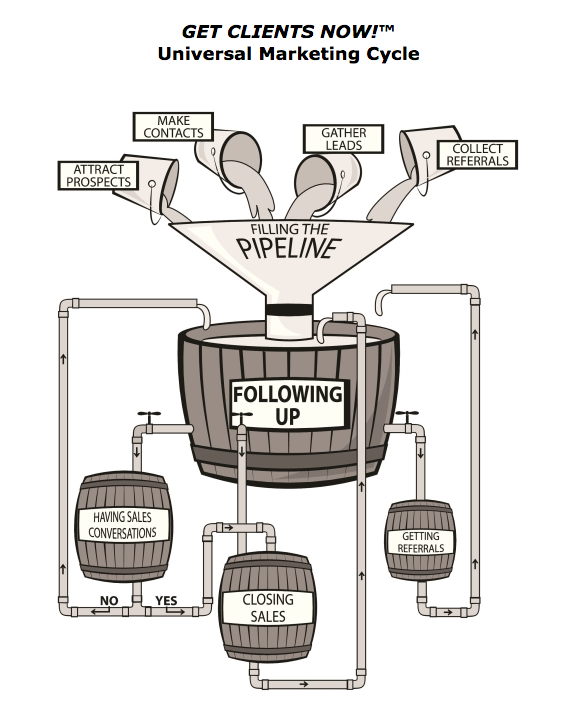By now, you’re convinced that content marketing is awesome sauce. But, what you’re not sure of is why you need a paid marketing strategy if you’re already paying for content marketing.
It seems redundant, right?

The truth is you need both. Content marketing and paid advertising go together like peanut butter and jelly, macaroni and cheese, or pringles and nutella (try it).
To extend your reach and get your content in front of more eyeballs, you need a solid paid marketing strategy. There’s no getting around it.
Here are the top reasons why you need a paid marketing strategy:
#1 Organic reach on both search and social media is down. Way down. On Facebook, your unpaid posts will only reach about 2% of your audience. If you want to reach more, you’ve got to pay.
#2 Ads are pretty affordable. You don’t have to take out a second mortgage on your home to pay for ads these days. You can spend less than $20 a day (although I have seen people eek by for half that), and still reach a huge audience.
#3 Ads are measureable. You’ll know immediately what works and what doesn’t work. Then, you can go back and tweak it.
#4 Ads are easier than SEO. Let me be the first to tell you that search engine optimization (SEO) is hard. Keywords and algorithms are the stuff of nightmares. The good news is with ads, especially Facebook ads, you don’t have to worry about that stuff. You can target your audience by demographic instead of search.
#5 You can remarket your audience. People who’ve expressed interest in your brand but didn’t bite? They’re on Facebook (because just about everyone is), and you can lure them back to your website through a super magic potion known as Facebook remarketing.
So, I know you have questions about how paid marketing works. And fortunately, I have answers.
I interviewed Jeff Schultz, our resident marketing tech extraordinaire. He shared excellent advice on why you should consider implementing a paid marketing strategy and how to pull it off successfully and effectively. Let’s get to it, folks.
Why pay for ads if I’m already paying for content marketing?
Jeff: If a tree falls in the forest and no one hears it, did it actually happen?
Content needs to be read for content marketing to achieve its business goal.
At this point in time, there are very few strategies available to promote content to an organic audience. It takes a long time to earn an organic audience whether through search or social.
If publishing routine content is akin to planting seeds that grow to produce fruitful rewards from an attentive audience, unpaid promotion is like watering the seeds. Paid promotion is a way to add a bit of fertilizer to the mix. Grow audience grow!
Google Adwords vs. Facebook: Which one is better? Why?
Jeff: As always, it depends… The one that is best for any situation is the one in which you can most easily define a relevant audience.
With search engines, you can do research to determine the demand for a piece of content. You can also target people with a specific answer to the questions they are attempting to solve.
The customer is aware of their problem and is actively searching for a solution.
Facebook is great for its ability to target very specific demographic and psychographic groups. Facebook also has very powerful tools for implementing retargeting campaigns.
Lastly, Facebook has a huge user base and has software that can analyze a small group (say, from an email list, or people who already like your page, etc.). Facebook can then locate other users that resemble or look like your target group through “lookalike audiences”.
What are the best ad programs to focus on?
Jeff: The key point is that there isn’t one platform that is better than another.
Whether it is paid search through Google/Bing/DuckDuckGo (Is Yahoo! a thing still?), or paid social ads through Facebook (which Instagram is now a part of!), Twitter, Pinterest, or even display advertising on a specific website, the best platform is wherever your target audience spends its most time online.
What kind of campaign should I run?
Jeff: Assuming you’ve created a content marketing funnel with your website, start out by promoting your content to an audience that is unaware of you and your product.
Build the top-of-the-funnel by promoting content.
Then move on to retargeting visitors to your site with campaigns that support your overall marketing funnel.
Do you have a lead magnet? Promote that lead magnet to web visitors who don’t convert directly on the site.
Another great strategy is to attempt to win back old site visitors by retargeting visitors from the past (30 to 180 days ago) with your latest content. These visitors will then fall back into your funnel.
Campaigns should be designed as part of a funnel to avoid wasteful spending.

Image Courtesy of Get Clients Now
I also like to think of the above image from Get Clients Now! by C.J. Hayden when setting up any kind of content marketing funnel.
What are the most common pitfalls to avoid when running an ad campaign?
Jeff: On Facebook, avoid audience overlap. Do this by setting up excluded audiences in your campaigns. Also, if the goal is new customers, exclude your customer list from every campaign.
Pick a naming convention for your campaigns, ad sets, and ads and stick with it unless a change becomes necessary or useful. Try to think ahead and ask yourself, “How would I find data for this ad a year from now?”
Finally, keep track of what you’ve learned in a living document.
How much should I budget for a campaign?
Jeff: Realistically, you should be prepared for a $500 – $1000 per month ad spend to get started. That’s not counting management expenses, whether it is your own time or an outside service.
The sky’s the limit when ROI is positive. If you can put $1.00 in and get $1.01 out, spend to infinity or until you run out of an audience.
How long before I see results?
Jeff: Immediately… well, almost immediately. Expect to spend a couple of weeks tweaking your audience targeting and possibly A/B testing your ads.
If a campaign doesn’t work within a week or two, shut it down. Go back to the drawing board and try again with a different ad, audience, or objective combination.
How do I know if my campaign is working? What metrics should I check?
Jeff: Keep an eye on the basics:
- Cost per click/lead/subscriber
- Results: Whether that’s clicks or conversions.
- Frequency: The average amount of times someone sees your ads. The higher the number, the more likely the audience is ignoring your ad and is “ad fatigued”. If the number is greater than three to four in a week, it’s time to refresh your ads or expand your audience.
Final Thoughts
Thanks again to Jeff for his expert insight. Now, over to you—are you ready to start a paid marketing strategy? If not, what’s been holding you back?